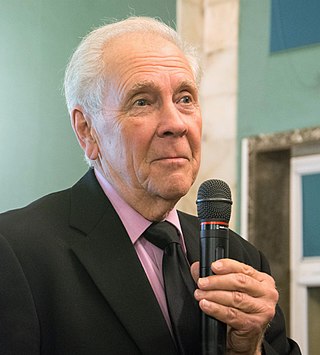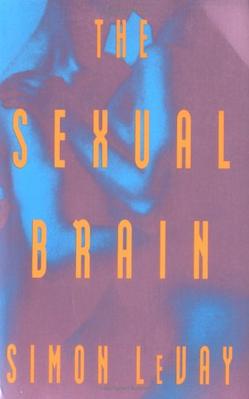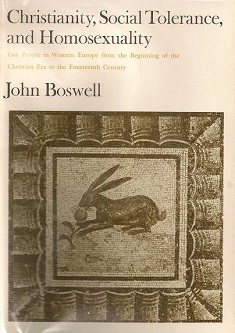
The Kinsey Reports are two scholarly books on human sexual behavior, Sexual Behavior in the Human Male (1948) and Sexual Behavior in the Human Female (1953), written by Alfred Kinsey, Wardell Pomeroy, Clyde Martin, and Paul Gebhard and published by W.B. Saunders. Kinsey was a zoologist at Indiana University and the founder of the Kinsey Institute for Research in Sex, Gender, and Reproduction. Jean Brown, Cornelia Christenson, Dorothy Collins, Hedwig Leser, and Eleanor Roehr were all acknowledged as research assistants on the book's title page. Alice Field was a sex researcher, criminologist, and social scientist in New York; as a research associate for Sexual Behavior in the Human Female, she provided assistance with legal questions.

Sexual orientation is an enduring personal pattern of romantic attraction or sexual attraction to persons of the opposite sex or gender, the same sex or gender, or to both sexes or more than one gender. Patterns are generally categorized under heterosexuality, homosexuality, and bisexuality, while asexuality is sometimes identified as the fourth category.

The Kinsey scale, also called the Heterosexual–Homosexual Rating Scale, is used in research to describe a person's sexual orientation based on one's experience or response at a given time. The scale typically ranges from 0, meaning exclusively heterosexual, to a 6, meaning exclusively homosexual. In both the male and female volumes of the Kinsey Reports, an additional grade, listed as "X", indicated "no socio-sexual contacts or reactions" (asexuality). The reports were first published in Sexual Behavior in the Human Male (1948) by Alfred Kinsey, Wardell Pomeroy, and others, and were also prominent in the complementary work Sexual Behavior in the Human Female (1953).

The field of psychology has extensively studied homosexuality as a human sexual orientation. The American Psychiatric Association listed homosexuality in the DSM-I in 1952 as a "sociopathic personality disturbance," but that classification came under scrutiny in research funded by the National Institute of Mental Health. That research and subsequent studies consistently failed to produce any empirical or scientific basis for regarding homosexuality as anything other than a natural and normal sexual orientation that is a healthy and positive expression of human sexuality. As a result of this scientific research, the American Psychiatric Association removed homosexuality from the DSM-II in 1973. Upon a thorough review of the scientific data, the American Psychological Association followed in 1975 and also called on all mental health professionals to take the lead in "removing the stigma of mental illness that has long been associated" with homosexuality. In 1993, the National Association of Social Workers adopted the same position as the American Psychiatric Association and the American Psychological Association, in recognition of scientific evidence. The World Health Organization, which listed homosexuality in the ICD-9 in 1977, removed homosexuality from the ICD-10 which was endorsed by the 43rd World Health Assembly on 17 May 1990.

Labeling theory posits that self-identity and the behavior of individuals may be determined or influenced by the terms used to describe or classify them. It is associated with the concepts of self-fulfilling prophecy and stereotyping. Labeling theory holds that deviance is not inherent in an act, but instead focuses on the tendency of majorities to negatively label minorities or those seen as deviant from standard cultural norms. The theory was prominent during the 1960s and 1970s, and some modified versions of the theory have developed and are still currently popular. Stigma is defined as a powerfully negative label that changes a person's self-concept and social identity.

Paul Drummond Cameron is an American psychologist. While employed at various institutions, including the University of Nebraska, he conducted research on passive smoking, but he is best known today for his claims about homosexuality. After a successful 1982 campaign against a gay rights proposal in Lincoln, Nebraska, he established the Institute for the Scientific Investigation of Sexuality (ISIS), now known as the Family Research Institute (FRI). As FRI's chairman, Cameron has written contentious papers asserting unproven associations between homosexuality and the perpetration of child sexual abuse and reduced life expectancy. These have been heavily criticized and frequently discredited by others in the field.
Richard Colestock Pillard is a professor of psychiatry at the Boston University School of Medicine. He was the first openly gay psychiatrist in the United States.

The Klein Sexual Orientation Grid (KSOG) developed by Fritz Klein attempts to measure sexual orientation by expanding upon the earlier Kinsey scale. Fritz Klein founded the American Institute of Bisexuality in 1998 which is continuing his work by sponsoring bisexual-inclusive sex research, educating the general public on sexuality, and promoting the bisexual community.

Gay Science: The Ethics of Sexual Orientation Research is a 1997 book by the philosopher Timothy F. Murphy about scientific research on sexual orientation.

Bisexuality is a romantic or sexual attraction or behavior toward both males and females, to more than one gender, or to both people of the same gender and different genders. It may also be defined to include romantic or sexual attraction to people regardless of their sex or gender identity, which is also known as pansexuality.
James Donald "Jim" Weinrich is an American sex researcher and psychobiologist. Much of his work examines the relationship of biology and sexual orientation. He won the Outstanding Contributions to Sexual Science Award at the 2011 Society for the Scientific Study of Sexuality (SSSS) Western Region annual meeting. He has also won the SSSS Hugo Beigel Award for the best paper published in The Journal of Sex Research. Weinrich served as the editor-in-chief of the Journal of Bisexuality from 2011 to 2014. He has also served on the editorial boards for The Journal of Sex Research and the Journal of Homosexuality.

Sexual Preference: Its Development in Men and Women (1981) is a book about the development of sexual orientation by the psychologist Alan P. Bell and the sociologists Martin S. Weinberg and Sue Kiefer Hammersmith, in which the authors reevaluate what were at the time of its publication widely held ideas about the origins of heterosexuality and homosexuality, sometimes rejecting entirely the factors proposed as causes, and in other cases concluding that their importance had been exaggerated. Produced with the help of the American National Institute of Mental Health, the study was a publication of the Institute for Sex Research. Together with its Statistical Appendix, Sexual Preference was the conclusion of a series of books including Homosexuality: An Annotated Bibliography (1972) and Homosexualities: A Study of Diversity Among Men and Women (1978), both co-authored by Bell and Weinberg.
Martin Stephen Weinberg is an American sociologist whose work frequently involves human sexuality. His major areas of interest include sociology of the body, sociology of deviance and control, and interpretive sociology.

Homosexuality: A Philosophical Inquiry is a 1988 book by the philosopher Michael Ruse, in which the author discusses different theories of homosexuality, evaluates the moral status of homosexual behavior, and argues in favor of gay rights.

The Homosexual Matrix is a book by American psychologist Clarence Arthur Tripp, in which the author discusses the biological and sociological implications of homosexuality, and also attempts to explain heterosexuality and bisexuality. The book was first published in 1975 by McGraw-Hill Book Company; it was republished in a revised edition in 1987. Based on his review of the evidence, Tripp argues that people do not become homosexual due to factors such as hormone levels, fear of the opposite sex, or the influence of dominant and close-binding mothers, and that the amount of attention fathers give to their sons has no effect on the development of homosexuality. He criticizes Sigmund Freud and argues that psychoanalytic theories of the development of homosexuality are untenable and based on false assumptions. He maintains that sexual orientation is not innate and depends on learning, that early puberty and early masturbation are important factors in the development of male homosexuality, and that a majority of adults are heterosexual because their socialization has made them want to be heterosexual. He criticizes psychotherapeutic attempts to convert homosexuals to heterosexuality and argues in favor of social tolerance of homosexuality and non-conformist behavior in general.

The Sexual Brain is a 1993 book about brain mechanisms involved in sexual behavior and feelings, and related topics such as sexual orientation, by the neuroscientist Simon LeVay. The book was praised as a well-written work on science. However, some reviewers pointed out factual errors, and stated that LeVay failed to prove that homosexuality has a biological basis.
Homosexuality: Disease or Way of Life? is a 1956 book by the psychoanalyst Edmund Bergler, in which the author argues that homosexuality is a curable illness. Bergler denies that homosexuality is caused by hormonal or other biological factors, the Oedipus complex, or having a dominant mother and a weak or absent father, instead attributing both male and female homosexuality to pre-Oedipal factors involving an unsolved masochistic conflict with the mother during the earliest period of infancy. According to Bergler, homosexuality in men reflects unconscious fear and hatred of women. Bergler argues that there are several different types of homosexuality, each with a distinct clinical profile. Bergler rejects the existence of bisexuality, maintaining that all supposed bisexuals are homosexuals, and criticizes the work of sex researcher Alfred Kinsey. He characterizes homosexual men as sexually promiscuous, and argues that this promiscuity is a result of their unsatisfying sex lives and masochistic craving for danger. Bergler argues against immediately repealing laws against homosexuality, though he suggests that such laws could perhaps be repealed in the future if other measures against homosexuality proved effective. Bergler proposes the publicizing of his ideas as a measure against homosexuality.

Sexuality and Its Discontents: Meanings, Myths, and Modern Sexualities is a 1985 book about the politics and philosophy of sex by the sociologist Jeffrey Weeks. The book received positive reviews, crediting Weeks with explaining the theories of sexologists and usefully discussing controversial sexual issues. However, Weeks was criticised for his treatment of feminism and sado-masochism.

Christianity, Social Tolerance, and Homosexuality: Gay People in Western Europe from the Beginning of the Christian Era to the Fourteenth Century is a 1980 book about the history of Christianity and homosexuality by the historian John Boswell.

The Science of Desire: The Search for the Gay Gene and the Biology of Behavior is a 1994 book by the geneticist Dean Hamer and the journalist Peter Copeland, in which the authors discuss Hamer's research into the genetics of homosexuality.















